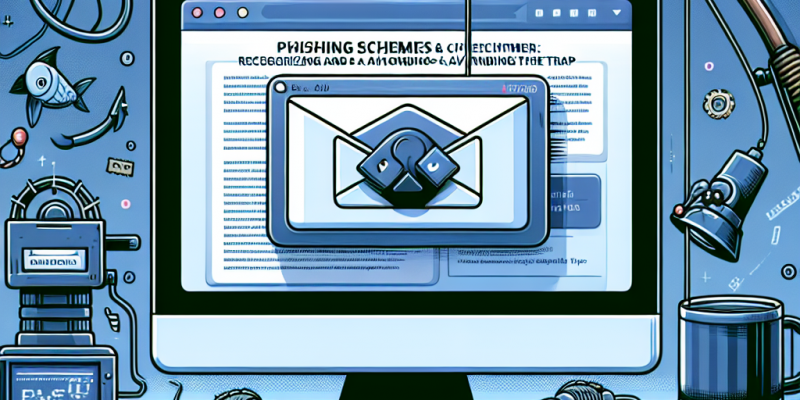Phishing Schemes: Recognizing and Avoiding the Trap

In an increasingly connected world, the threat of cybercrime looms larger than ever. Among the myriad forms of online threats, phishing schemes stand out as one of the most deceptive and widespread tactics used by cybercriminals. By masquerading as legitimate communications, these scams aim to trick individuals into divulging sensitive information such as passwords, credit card details, and personal identification. In this article, we will explore what phishing is, how to recognize it, and crucial tips to avoid falling victim to these insidious traps.
Understanding Phishing
Phishing typically involves fraudulent emails, messages, or websites that appear to be from trustworthy sources, such as banks, social media platforms, or well-known companies. The goal is to entice users into providing confidential information or downloading malicious software onto their devices. While phishing has been around for decades, criminals continually refine their tactics to exploit the vulnerability of unsuspecting victims.
Common Types of Phishing Scams
-
Email Phishing: This is the most recognizable form of phishing. Attackers send bulk emails that appear authentic, often impersonating popular brands or services. These emails usually contain links to fake websites that are designed to steal personal information.
-
Spear Phishing: Unlike general email phishing, spear phishing targets specific individuals or organizations. These messages may include personal information or references that make them seem more legitimate, thus increasing the chances that the recipient will comply with the request.
-
Whaling: This is a targeted phishing attack directed at high-profile individuals, such as executives or financial officers. The goal is often to steal large sums of money or sensitive business information.
-
Vishing: Voice phishing, or vishing, involves receiving a phone call from someone pretending to be from a legitimate organization, such as a bank or tech support. The caller usually persuades the victim to provide sensitive information verbally.
- Smishing: This variant uses SMS or text messages to lure victims into clicking on malicious links or revealing personal data.
Recognizing Phishing Attempts
To protect oneself from falling prey to phishing schemes, it is essential to be able to recognize the signs of phishing. Here are some common indicators to watch for:
-
Suspicious Email Addresses: Check the sender’s address carefully. Phishing emails often come from addresses that look similar to legitimate ones but may have slight variations or extra characters.
-
Generic Greetings: Phishing attempts frequently use generic salutations like "Dear Customer" instead of addressing you by name.
-
Urgent Language: Many phishing emails create a sense of urgency, suggesting that your account will be locked or that you must act immediately to avoid severe consequences.
-
Spelling and Grammar Errors: Legitimate companies usually proofread their communications, so pay attention to any unusual grammatical mistakes or awkward phrasing.
-
Unusual Links: Hover your mouse over links before clicking. If the URL looks strange or does not match the purported sender’s website, do not click it.
- Requests for Personal Information: Be wary of unsolicited requests for sensitive information. Legitimate organizations typically do not ask for personal data via email.
Avoiding the Trap
Preventing phishing attacks involves a combination of vigilance, education, and technological measures. Here are strategies to help you stay safe:
-
Verify the Source: If you receive a suspicious email, call or contact the organization directly using an official number instead of responding to the email.
-
Utilize Two-Factor Authentication (2FA): Enable 2FA on your accounts whenever possible. Even if your password is compromised, this additional layer of security can protect your account.
-
Educate Yourself and Others: Stay informed about the latest phishing tactics. Share this knowledge with friends and family to safeguard them against falling victim.
-
Install Security Software: Utilize reputable antivirus and anti-malware software that can help identify and block phishing attempts.
-
Keep Software Updated: Ensure that your operating system, browser, and apps are updated regularly to protect against vulnerabilities that phishing attacks may exploit.
- Think Before You Click: Always be cautious about clicking links or downloading attachments from unknown sources.
Conclusion
Phishing schemes continue to evolve, becoming more sophisticated with each passing day. Recognizing the signs of these deceptive tactics and taking proactive measures can significantly reduce your risk of falling victim to cybercriminals. By staying informed, exercising caution, and employing technological safeguards, you can navigate the digital landscape with greater security and peace of mind. Remember, in the fight against phishing, awareness is your most potent weapon.














